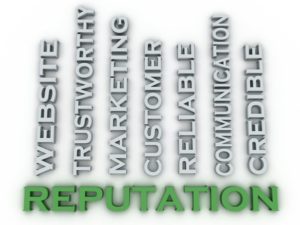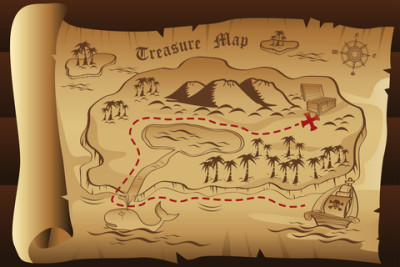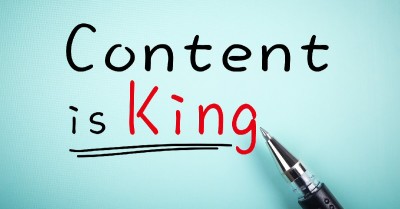The National Association of REALTORS® and Google completed a joint study on ‘Consumer and Market Trends in Real Estate.” They state, “Together, Google and NAR’s individual research results tell a cohesive story about today’s uber-connected home shopper.” Any REALTORS® marketing plan should take into account these findings.
The findings include:
- 90% of home buyers searched online during their home buying process (Source: 2012 Profile of Home Buyers and Sellers)
- Real estate related searches on Google.com have grown 253% over the past 4 years (Source: Google Internal Data, Q3 2012)
- Buyers use specific online tools during different phases of the home search process.
- How important “local” search terms and websites are for buyers.
- How mobile technology connects online to offline home buying – including the reading of online reviews
- 75% of senior home buyers go online to search for a home
- Senior home shoppers place high value on neighborhood information and interactive maps
(see all the reports at http://www.realtor.org/sites/default/files/Study-Digital-House-Hunt-2013-01.pdf)
How are you connecting with these Sellers and Buyers? Since 2006 Inbound Marketing has been the most effective marketing method for doing business online. Agents and Brokers that use Inbound Marketing stand to gain a competitive advantage over those that choose to ignore it. Instead of the old outbound marketing methods of:
- Buying ads in newspapers (6% said they frequently look at the ads , 22% said they occasionally look at the ads, & 73% said they rarely or not at all look at the ads)
- Spending big bucks on real estate magazines (and not knowing how many qualified buyers or sellers actually see the ad: 3% frequently, 15% occasionally, & 82% rarely or not at all) That hurts!
- Doing mail-outs that get thrown away
- ‘Praying’ for leads
- Cold calling
- Ads no one reads in the Yellow Pages
A REALTORS® marketing plan focuses on creating quality content that gives Sellers and Buyers a reason for coming back to your website, emailing or calling you. By knowing the Sellers’ and Buyers’ needs, fears and wants (their ‘Personas‘) you ATTRACT inbound traffic that you can then CONVERT, CLOSE, and DELIGHT over time.
The new way of doing business is creating experiences. Marketing is as important as the services you offer. The Sellers and Buyers are more empowered than ever. They can see all the listings on line and compare one agent/broker to another on their desktop, tablet and/or smart phone. You have to be better than the next REALTOR® at providing a great experience or the new and existing clients will go someplace else.
What Does the Graphic Mean?
ATTRACT, CONVERT, CLOSE and DELIGHT are the four marketing actions Inbound Marketers must take in order to obtain visitors, leads, and clients.
The bottom row shows the TOOLS you need to accomplish these actions. Several of the tools, like email, are used at different stages of of your marketing campaign.
What Exactly is Inbound Marketing?
Sharing is caring and Inbound Marketing is about creating and sharing content with the world. By creating content specifically designed to appeal to your dream clients, inbound marketing attracts qualified prospects to your business and keeps them coming back for more.
So How do you do That?
Content Creation- You create targeted content that answers your client’s basic questions and needs, and you share that content on your blog, social media, videos, and email.
Lifecycle Marketing
You know that the first time someone comes to your site, they are looking for the listings. They sign up for email updates, they look around the site to see if you have statistics about the real estate market, they look through your free offers, etc. People go through stages as they interact with your company, and each stage requires different marketing actions.
Personalization
As you learn more about your site’s visitors/leads over time, you can better personalize your messages to their specific needs. Are they interested in selling or buying? When are they planning to actually buy or sell? What price point are they looking at when they do buy?
Multi-Channel
Inbound marketing is multi-channel by nature because it approaches people where they are, in the channel where they want to interact with you. With your marketing on social media, you are reaching the people who prefer to communicate on social media. If you also put that marketing information on your blog, people who subscribe to your blog will see it and people who want to receive their information by RSS feed or by being notified when a new blog post is up, will see your marketing. Your custom email program will email the information out to people who buy-in to your email program, etc. You are reaching your audience in the channel they prefer.
Integration
Your publishing and analytics tools all work together like a well-oiled machine, allowing you to focus on publishing the right content in the right place at the right time. You can analyze your marketing effectively with freebies like Google Analytics and you can also automate many of your marketing tasks.
Make Marketing People Love
By publishing the right content in the right place at the right time, your marketing becomes relevant to the needs of your clients. Now that’s marketing people can love.
The Four Marketing Actions
Attract
You don’t want just anyone to your site, you want the site visitor who wants the services you provide. You want the people that are most likely to become leads, and, ultimately, happy clients. Who are the “right” people? Ideal clients, also known as our ‘SELLER PERSONAS’ and ‘BUYER PERSONAS’. These Personas are made up of the traits of your sellers and buyers who contribute the most to your bank account. Personas encompass the goals, challenges, pain points, fears, as well as personal and demographic information of your ideal prospect. Your Personas are the people around whom your whole business is built. If you only deal with Sellers who own homes worth over $500,000, then all your marketing material needs to address that group of people not someone who owns an $80,000 condo.
Some of the most important tools to attract the right users to your site are:
Blogging
Inbound Marketing starts with blogging. A blog is the single best way to attract new visitors to your website. In order to get found by the right prospective customers, you must create educational content that speaks to them and answers their questions.
Social Media
Don’t just put your listings on Facebook, engage with your prospects, and put a human face on your brand. Interact on the channels where your ideal Sellers and Buyers spend their time. Post an introduction to your latest blog post and a link to it too on social media and send out an email.
Keywords
Your clients begin their buying process online, usually by using a search engine to find something they have questions about. So you need to make sure you’re appearing prominently when they search. To get there, you need to carefully, analytically pick keywords, optimize your pages, create content, and build links around the terms your ideal Sellers and Buyers are searching for.
Pages
You must optimize your website to appeal to and speak with your ideal Sellers and Buyers. Make sure your website content contains information that will turn visitors into leads. They want to learn more about what you do, how you do it and how it benefits them.
Convert
The next step is to convert your site visitors into leads by getting them to fill out a form with their contact information so that you have permission to market to them. You need to offer them something of value and that is information that is interesting and valuable to each of the personas such as a ’60 Day Moving Check List.’ Both Sellers and Buyers would consider that worth giving you their contact information, and they are also giving you permission to market to them when they fill out the form(s).
To convert visitors to leads, we create:
Calls-to-Action
Calls-to-action are buttons or links that encourage your visitors to take action, like “Download Our 60 Day Planning Guide for Your Move” or “Sign-up For Our Monthly Updates on Marketing Statistics.” If you don’t have enough calls-to-action or your calls-to-action aren’t enticing enough, you won’t generate any leads.
Landing Pages
When a website visitor clicks on a call-to-action, they should then be sent to a landing page. A landing page is where the offer in the call-to-action is fulfilled, and where the prospect submits information that you can use to begin a conversation with them. When website visitors fill out forms on landing pages, they become leads. Your landing pages also include an automatic ‘Thank You’ page so that the site visitor understands that their request has been received. (That ‘Thank You’ page can also have a call-to-action on it)
Forms
In order for visitors to become leads, they must fill out a form and submit their information. Forms must be optimized to make this step of the conversion process as easy as possible.
Contacts
One of the weak links I see so often is that a REALTORS® may be receiving numerous leads but they don’t have a way to organize and keep those leads. Some companies supply their agents with a Customer Relations Management system. If this is one of the tools that is supplied to you, make sure you know how to use it and that you do use it. Your leads are your ‘gold mine’. You need to work that gold mine
Close
You have leads coming in from your website, social media, email, landing pages, etc. but you have one data base to manage those leads. You can segment the leads into different categories such as ‘Sellers’, ‘Buyers’, ‘Looking to buy in the next 90 days’, ‘Just looking for now’, etc. so that you know what type of marketing is going to work best for each Persona. Certain marketing tools can be used at this stage to make sure you’re closing the right leads at the right times.
Closing tools include:
Lead Scoring
You have all those leads in the database, how do you know which ones you should be calling now? Developing a numerical system as simple as: #1 is a ‘must call immediately’ to #10 is a ‘put on an email list for now’.
Email
What do you do if a visitor clicks on your call to action, fills out a landing page, or downloads your free offer(s), but still isn’t ready to become a client? A series of emails focused on useful, relevant content can build trust with them and help them get ready to sell or buy.
Marketing Automation
This process involves creating email marketing and lead nurturing tailored to the needs and life cycle stage of each lead. For example, if a visitor downloaded a free offer on a certain topic from you in the past, you might want to send that lead a series of related emails. But if they follow you on Twitter and visited certain pages on your website, you might want to change the messaging to reflect those different interests.
Closed-loop Reporting
How do you know which marketing efforts are bringing in the best leads? Is your sales team effectively closing those best leads into clients? Integration with your Customer Relationship Management (CRM) system allows you to analyze just how well your marketing and sales teams are playing together.
Delight
Inbound marketing is all about providing remarkable content to your users, whether they be visitors, leads, or existing clients. Just because someone has already written you a check doesn’t mean you can forget about them. Inbound Marketers continue to engage with, delight, and turn their current customer base into happy promoters of them and their company.
Tools used to delight customers include:
Smart Calls to Action
These present different users with offers that change based on their Persona and life cycle stage.
Social Media
Using various social platforms gives you the opportunity to provide real-time customer service.
Email and Marketing Automation
Providing your existing customers with remarkable content can help them achieve their own goals, and keep you fresh in their minds.
A New Methodology
The new Inbound Marketing Methodology covers each and every step taken, tool used, and life cycle stage traveled on the road from stranger to client. It empowers you to attract visitors, convert leads, close customers, and delight promoters. The new methodology acknowledges that inbound marketing doesn’t just happen, you do it. And you do it using tools and applications that help you create and deliver content that will appeal to precisely the right people (your Seller and Buyer Personas) in the right places (channels) at just the right times (life cycle stages).

 How One or Two Bad Reviews Can Cost You Big Time!
How One or Two Bad Reviews Can Cost You Big Time! LOCAL Search Engine Internet Advertising — WITH OR WITHOUT A WEBSITE!
LOCAL Search Engine Internet Advertising — WITH OR WITHOUT A WEBSITE! How many times have I heard, “I don’t have time to find good blog content?”
How many times have I heard, “I don’t have time to find good blog content?”  When a user visits your site and leaves it without going to another page on the site it is called a “bounce”. The ratio of such bounces to the total number of visitors to the page is called the ‘bounce rate’. For instance if 1000 users land on a page and then either hit the back button or leave the page for another site, they’ve ‘bounced’.
When a user visits your site and leaves it without going to another page on the site it is called a “bounce”. The ratio of such bounces to the total number of visitors to the page is called the ‘bounce rate’. For instance if 1000 users land on a page and then either hit the back button or leave the page for another site, they’ve ‘bounced’.